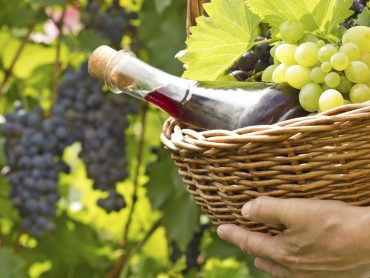In Vino Veritas: Making Your Wine List Work For You
Wine can be a big source of revenue for your F&B stream. It can also be intimidating. In addition to price, confusion and lack of knowledge are two barriers to purchase. Luckily, both can easily be avoided with a comprehensive menu redesign.
(This article is more of a “Wine 101” for those properties without a well-defined wine program already in place. So, if this comes off as overly simplistic — which is one of the key points of my argument, by the way — then stay tuned for a later post when I discuss some more “sophisticated” wine strategies.)
To begin, let’s use the example of the Yellow Tail wine brand, which was wonderfully illustrated in the marketing book “Blue Ocean Strategy.” The parent company, Casella Wines, worked hard to diffuse any bewilderment surrounding wine purchases by making it very simple for those with limited experience to understand.
At its North American launch, Yellow Tail started with only one red and one white varietal, and didn’t bog down the labeling with complex grape names, obscure tastes or vineyard source locations. All the bottle had was the official name, “[ yellow tail ]” and an illustration of a kangaroo — an animal wholly indicative of Australia and a clear marker for the brand. The flavors were always light, sweet and easy to get into (read: fun).
I’m not writing this for the supreme echelon of eateries, but rather the in-between, family-style joints. So, unless you operate a Michelin-star-winning, best-of-the-Zagat-guide, sommelier-employing restaurant, consider making your wine list more accommodating to those without a bachelor’s degree in viticulture.
And by accommodating, what I’m really suggesting is a simplification. The last thing you want is someone to stare slack-jawed at your wine list and mutter, “I don’t know.” The more options you give a person, the harder it is for them to make a choice, especially when they don’t understand everything they’re reading.
Most wine menus are sorted by red and white with subcategories for specific grapes. The broad delineators of red and white work, but the subcategories don’t. Although it may come as a surprise for those inundated with F&B terminology, many people won’t know the differences between a Sauvignon Blanc and a Pinot Grigio, or a Cabernet Sauvignon and a Pinot Noir. Chardonnay? Shiraz? Burgundy? Bordeaux? Who knows? Who cares?
Start by making it fun. Instead of organizing by varietal, sort by dominant flavors. For whites, think “sweet,” “dry,” “fruity” or “tart.” For reds, consider “light,” “strong,” “spicy” or “bold.” Not only are these categories easier to understand, but they will also inject the menu with excitement.
Next is brevity. A long list means more options. More options — more trouble. Work with your F&B director to decide on a comprehensive menu that encompasses a full spectrum of tastes, but is also as lean as can be. See if you can fit it on one page in large type. How about half a page? What if you only had four whites and four reds? Would that make for an easy decision?
Third, don’t cluster your wine list with too much information. Just as Yellow Tail never stressed the vineyard location, neither should you. Put the grape varietal and year of production in small type, then give an account of the dominant tastes, but keep these descriptors brief and alluring.
You’ll also want to emphasize local vintners if your location allows it. This is the one exception where I’d list the vineyard and winery. Out-of-towners and international arrivers will be curious to learn about the local produce. Take the time to educate them with perhaps a small blurb that highlights some unique aspects of the region.
Lastly, at the bottom or on a separate page, you can make it even easier by describing a selection of recommended wine pairings. Be sure to emphasize how each wine works to enhance and contrast the flavors of specific appetizers or mains. And naturally, use fun and moving descriptors to help nudge people in the right direction.
Work with your F&B director or in-house wine buyer to plan a new wine menu that stresses how fun and effortless wines can be. Do this, and your wine sales are bound to increase!




